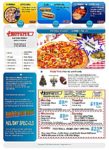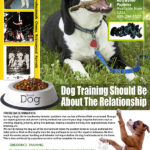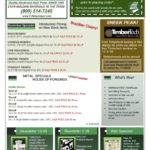EMAIL BLASTS
Have a clear purpose for the blast
Email blasting customers or partners is not an arbitrary task. Each blast should have a concise purpose before you begin to draft it. Determine what you’re trying to deliver and how you want the recipients to react to the email. The blast’s purpose could be enticing customers to purchase something, updating employees on a new project or initiative, or a newsletter to recap the month’s events. Once you determine the purpose of the blast, you can work on making the message more clear to your recipients.[1]
- For example, your organization is running a promotional offer, but if customers don’t know about it, you can send a blast with the purpose of informing people of your promotion as well as encouraging them to purchase your product online.
- If you are sending a newsletter, make sure that it goes out around the same time each month.
Write a compelling subject line
The subject of your email will be the first thing that people will see when viewing it. Because of the immense amount of spam that exists, it’s important that you draw the recipient in enough so that they open the message. The subject line should invite the reader to some benefit or include a sense of urgency which requires action. Avoid cliche marketing terminology like “act now” or “free limited offer” as these subject lines can make recipients feel suspicious and turned off. Your subject line should be 50 characters or less.
- An example of a compelling subject line would be “Act Today, 25% off of all linen tops.
- Another subject line could be something like, “Stop the Northeast High from shutting down. Call the mayor today.”
- Aim to make your subject compelling but clear. If the reader doesn’t know what the email is about, they are less likely to open it.
- Avoid excess punctuation or capital letters as this can be perceived as spam.
Use action-oriented language
Our email blast should have some “call to action” or something that the recipient can do after reading the message. This call to action should be short and specific. Tell the reader exactly what you want them to do, and why it will benefit them.
- Having a single purpose or call to action will improve your click-through rates significantly. Avoid packaging multiple offers or events within one email.
- Action-oriented language can be something like “Buy the new season of Shameless and get 10% off your next order!”
- Actions could include calling Senator about a bill, purchasing a new product, or leaving feedback.
Personalize the email blast
E-blast applications allow the writer to cater each email to their recipients with responsive fields. Instead of addressing an email to everyone, you can make it feel as if you sent the email directly to the recipient. Whenever you can, aim to customize the email so that the reader feels more invested in it.
- You’ll need a database with names or a spreadsheet that has everyone’s name in a specific field in order to personalize your email blasts.
- Personalizing emails improve click-through rates and the amount of people
- who decide to open your email.
- Typically fields for personalization will look something like <FirstName>, [name], or some other variation depending on the software you are using.
- Personalizing an email with a name may prevent your blast from triggering some email providers spam filters.
Keep the email short
If you write an email that’s too long, there’s a chance that recipients will skim over it or stop reading it at a certain point. This could mean that they miss your call to action, or what you’re trying to get across. Try to edit out pieces of information that aren’t critical to the overall message. Make messages as short and concise as possible. Avoid over-elaboration or background that can clutter your blast.
- Break up your text into paragraphs that contain a cohesive theme, so it doesn’t look like one block of text.
- The best emails will be under 750 words
Ensure that your email meets spam guidelines
The CAN-SPAM Act are laws that govern how you can craft emails. To stay compliant with the act, there are several things you must include and things you must avoid doing to ensure that your emails aren’t considered spam. For one, there must be an unsubscribe button somewhere in the email so that people can opt out of receiving them. Another rule is that recipients must know who they are receiving the email from, so include an accurate header or reply address where they can point their concerns or comments.
- Spam filters for different mailing services will flag emails that have sent spam in the past, and filter emails based on other criteria as the type of content and how it’s formatted.
Use an email service provider
Now that you’re creating email campaigns designed to benefit, not irritate your recipients, you’ll need to verify that your email reaches their inbox and isn’t getting sent to the spam folder or bounced entirely. Email Service Providers (ESPs) reduce the hassle related to email delivery so you can focus on your campaign’s content and strategy.
The larger your list grows, the more important it is to rely on dependable and fast ESPs. ESPs also monitor the IP that you send email from and let you know if something is up and may be affecting your delivery rate.
Use an email service provider
Now that you’re creating email campaigns designed to benefit, not irritate your recipients, you’ll need to verify that your email reaches their inbox and isn’t getting sent to the spam folder or bounced entirely. Email Service Providers (ESPs) reduce the hassle related to email delivery so you can focus on your campaign’s content and strategy.
The larger your list grows, the more important it is to rely on dependable and fast ESPs. ESPs also monitor the IP that you send email from and let you know if something is up and may be affecting your delivery rate.
Send to a clean email list
By now it should go without saying—but it’s always worth reemphasizing—any email list you haven’t built with permission marketing tactics jeopardizes your ability to send any email at all (not to mention it kills your relationship with your recipients).
SendGrid doesn’t allow customers to send email to purchased email lists. This protects you and everyone who uses SendGrid to send email.
Personalize your list with segmentation
A pillar of content and copywriting is to write as if you’re speaking to one single person at a time. This isn’t feasible with mass email marketing, but segmenting your list and messages helps attain the same sort of feeling. Email marketing segmentation transforms generic email into personalized and tailored messages more likely to resonate with your recipients.
Luckily, it’s never been easier to accomplish this. Modern email marketing software allows you to efficiently segment your messages to recipients based on a number of factors such as:
- Age
- Gender
- Region
- Past email
SendGrid offers all of these segmentation capabilities in our own email marketing tool, Marketing Campaigns. If you’re interested in learning about how to leverage your segmentation with automation,
Include a clear call to action
If you’ve managed to convince your recipient to open one of your promotional emails, nice work. Take three seconds to celebrate. But this is only the start. What are you asking them to do once you’ve grabbed their attention?
Without a compelling call to action (CTA), all your effort and planning will sadly be for nothing. How you craft your CTAs will depend on the action you want the recipient to take.









